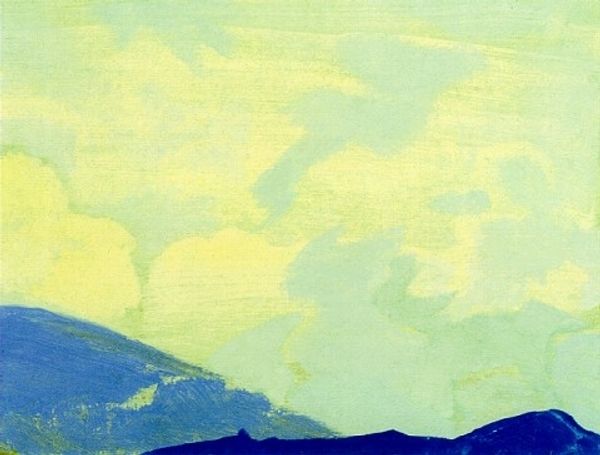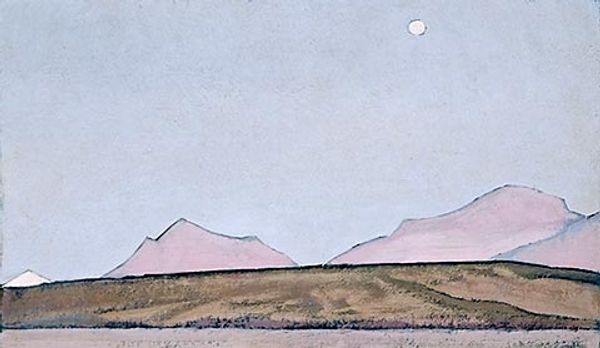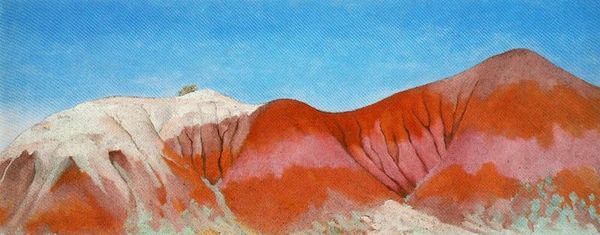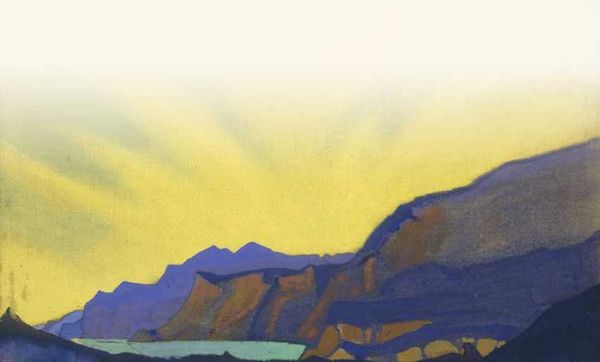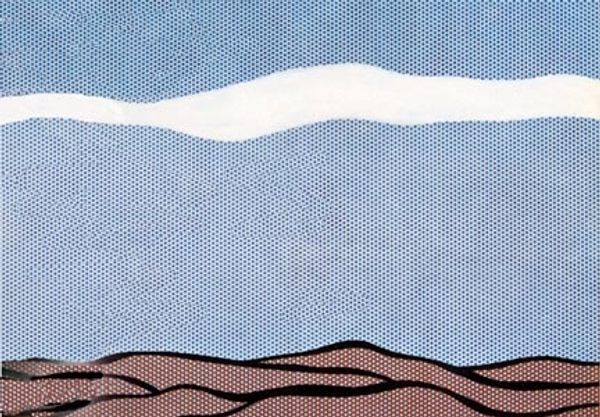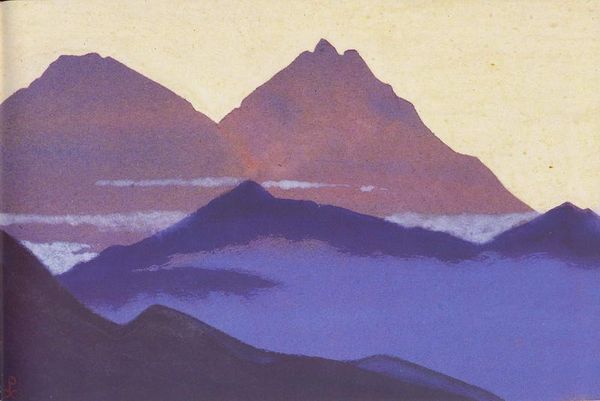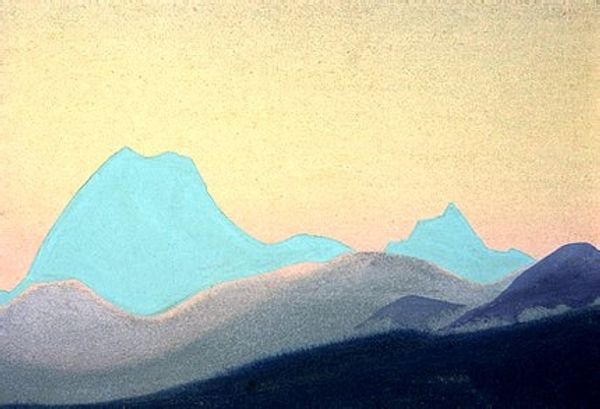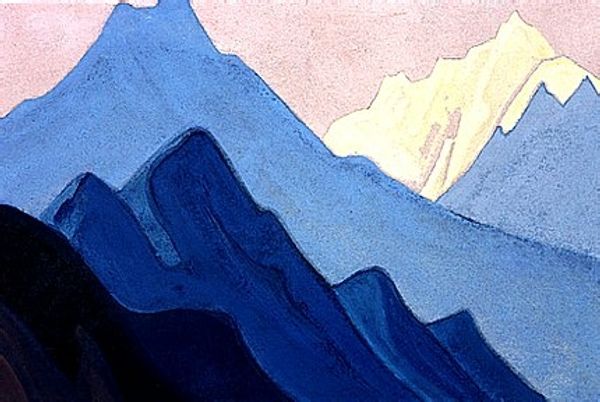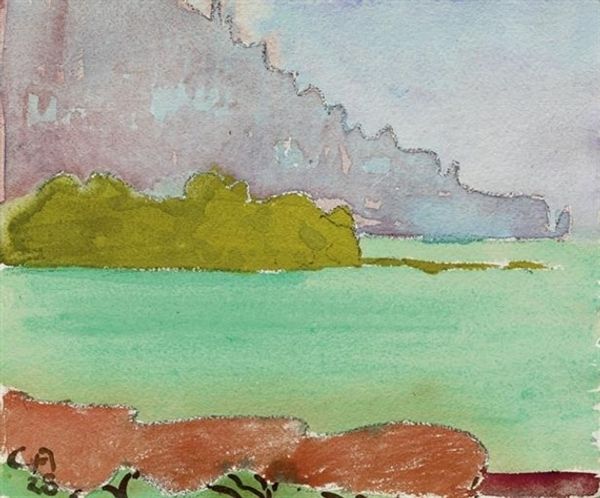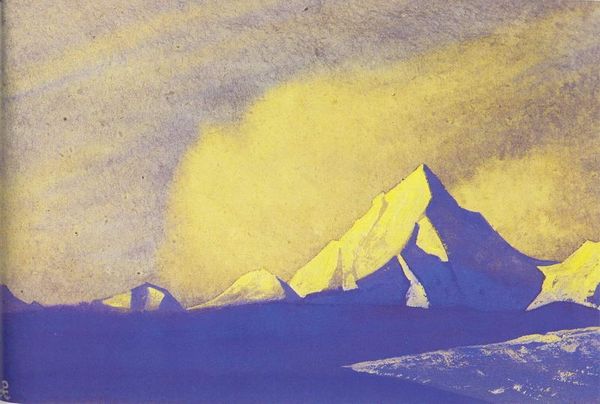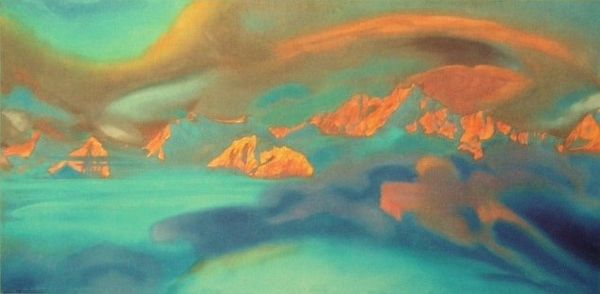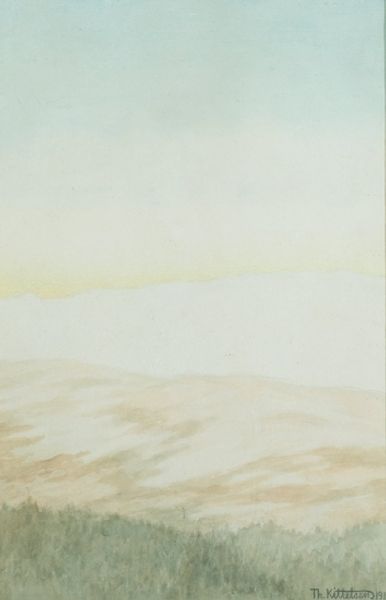
painting, watercolor
#
sky
#
painting
#
landscape
#
oil painting
#
watercolor
#
orientalism
Copyright: Public domain
Editor: So this is "Burein-Gol. Qaidam." by Nicholas Roerich, painted in 1928. It seems to be an oil or watercolor painting, quite muted in tone. What do you see in this piece? Curator: I see a landscape laden with the weight of colonial exploration and orientalist fantasy. Roerich’s paintings from this period were often interpreted through the lens of The Great Game, where the landscape becomes a symbolic territory contested by empires. How does the flatness of the depicted space strike you? Editor: Well, it almost feels like a stage set. Not really inviting, more like a backdrop. Curator: Exactly. That distancing, that presentation, can be interpreted as an exertion of power – a claiming of space. Think about the artist’s Russian background and the complex dynamics of Russia's eastward expansion. How might that influence his rendering of the 'Orient'? Editor: I never considered it in that way. It makes me think about whose perspective is actually being centered. Is he truly representing the land, or an idea of it? Curator: Precisely. And how does that idealized image potentially erase the lived experiences and histories of the people who inhabit that space? Think about how the romanticizing of landscapes has historically been used to justify political and economic agendas. Editor: I’m definitely going to view landscape paintings differently now. It’s not just about pretty scenery; it's about power and representation. Curator: Absolutely! Roerich’s work provides an important, albeit complicated, lens through which we can critically examine these dynamics. Hopefully we can acknowledge the artistry, while simultaneously engaging with the socio-political subtext embedded in such artwork.
Comments
No comments
Be the first to comment and join the conversation on the ultimate creative platform.
